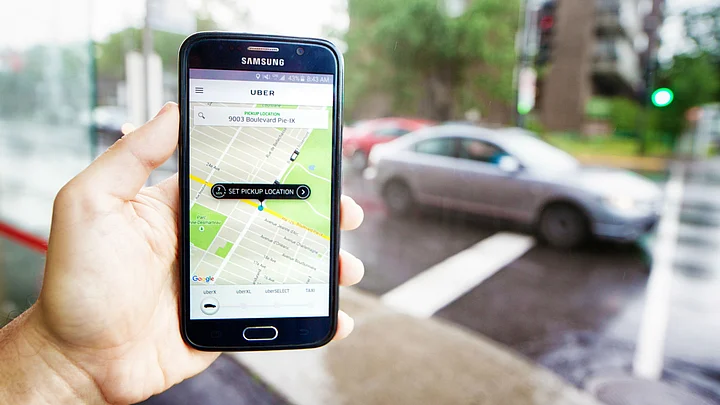Uber operating in India, offering cabs to over 30 cities, doesn’t happen as easily as it may seem. To get you a cab from Point A, and to ensure that you reach your Point B, needs a heavy computing process.
But that computational power comes to nought if the supporting network backs out, or in the case of our cities, blacks out. But Uber has stepped up and is making the necessary changes, improving the network from its side, to make sure that drivers as well as the riders continue to get what they claim is a seamless experience.
So, how do they plan to fix that and by when? To find out, we managed to get some quality time with Manik Gupta who is the Head of Product, Marketplace & Maps at Uber, to gauge his understanding of the challenges that a market like India poses, geographically.
He starts off our interaction by highlighting how Uber sees mapping and navigation in general, which is the core of how their business operates.
For Uber, mapping consists of three areas; ETA, ability to find the destination, and manage to navigate (both for driver and the rider).Manik Gupta, Head of Product, Marketplace & Maps, Uber
After leading the Maps team at Google for over eight years, Manik is no stranger to navigation and mapping areas across different parts of the world, including India. Here, he feels that the recent developments in the country don’t match how Google maps have been updated. For example, some places in Gurugram have just come up in the past year or so, which is not accurately reflected in the maps.
We’re working to understand India-specific things which can improve rides, and update our repository to make location searching faster.Manik Gupta, Head of Product, Marketplace & Maps, Uber
He also feels that unlike in the US, people in India don’t subscribe to addresses to reach a location, instead they rely on landmarks - well, you’ve got to agree with that.
However, keeping all this aside, he totally agrees that Uber in India needs work.
How Uber Gets You the Driver
Now, meeting the navigation guy from Uber brought back sour memories for me, and I made sure to get answers about how Uber works out its driver dispatch model.
The way we make dispatch decision in terms of which cab should reach you (of course, based on who is closest) is based on other parameters as well.Manik Gupta, Head of Product, Marketplace & Maps, Uber
This is where Manik focuses on the 250,000-strong driver base for Uber in India and talks us through as to how data churning is done at their end to connect you to the nearest driver. But for the drivers, Uber ensures they have the flexibility to decide whether he wants to accept the ride or not.
“If pick-ups and drops happen well, then our experience gains from it.”
Manik was quick to highlight that Uber’s goal is to minimise ETAs, but he was emphatic in saying that if the ETAs are long, then the rider always has the choice whether or not to accept the ride.
Uber has also learnt from its drivers that they’d prefer a one-stop solution to access both; the driver interface as well as the Maps for navigation. Having to use two different platforms - as they currently have to; Google Maps and the Uber app - forces drivers into multi-tasking, which isn’t ideal while driving on the roads.
Clearly, Manik and co aren’t pleased with this situation, which is why Uber has been working on its own version of maps that can be accessed in the Uper app, headed by the man himself, which he promises will ease navigation constraints for the drivers.
The driver has a choice between Google Maps and own in-house navigation set-up. Our app ensures convenience without switching apps and we don’t tell the driver where they are going but using it, the driver is directed to the first turn without knowing his destination.Manik Gupta, Head of Product, Marketplace & Maps, Uber
The Uber version of maps is only available to the driver as of now.
The DIY Connect with Consumers
The other important topic worth discussing with these guys was the customer care support. Of late, we have seen complaints about drivers being made via customised messages on the Uber app, rather than the traditional calling via IVRS (interactive voice response system) that we Indians are accustomed to.
Why the change? Answering this, Shirish Andhare, Head of India Product and Growth at Uber emphasised the global nature of the brand and its product and how the Indian market fits into that.
Uber evolved in a mature market like the US, where self-serve culture works. There is definitely a culture (like India) where higher touch is preferred, but is that the best experience? We’re working on that.Shirish Andhare, Head - Product and Growth, Uber India
The executive response support feels sluggish and hopefully Shirish and his team can work to improve that for India.
India Matters a Lot to Uber
This has become evident ever since their global team recently launched a slew of features that’ll be piloted from India, before making its global debut.
Also Read: Now Uber Lets You Book a Cab Even If You Don’t Have a Smartphone
Options like offline location searching has been in their pipeline, which, as explained by Manik to us, revolves around caching of data and it’s good to see that in action already. And they promise to keep evaluation options and features that could enhance how Uber as a cab-aggregator works out in the country.
(At The Quint, we question everything. Play an active role in shaping our journalism by becoming a member today.)
